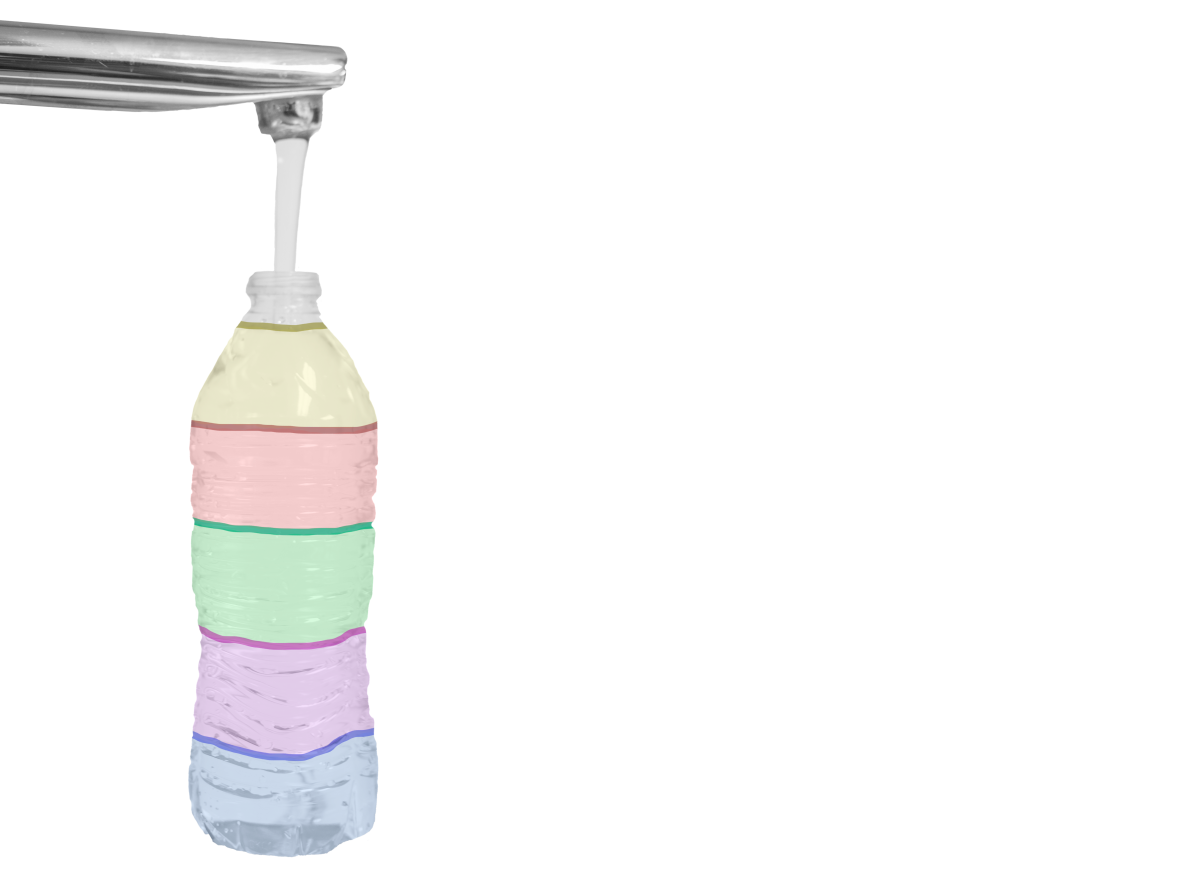Kathryn Vos said she finds herself not drinking as much water as she should be. Instead of filling her water bottle in the morning as she would usually do, she waits to find a working water fountain throughout the day.
“I just don’t (drink from the tap) because of the taste,” Vos, an undecided freshman, said.
Undecided freshman Kevin Young, who lives in Residence Hall West, said the taste of the tap water was subpar.
“It’s slightly metallic. It’s more like something I would go to as a last resort,” Young said. “I would rather spend $1.75 buying a water bottle instead of drinking from the tap. “
Steven Silco, the supervisory control and data acquisition supervisor in the City of Richardson’s Utilities Department, said the source water that’s supplied to Richardson as well as UTD piping infrastructure might be possible causes of taste issues.
The source water comes from the North Texas Municipal Water District, and the City of Richardson distributes it to its many clients, including residential areas, industrial complexes and institutions such as UTD.
Gary Cocke, the associate director for sustainability and energy conservation at UTD, said water is supplied to UTD via a larger water line that is then split up into the university-owned plumbing and pipes for the various buildings.
“UTD is essentially just a large household,” Cocke said. “We’re the same as anyone else in the city.”
The NTMWD collects the water from a mix of reservoirs and lakes, of which the primary source is Lake Lavon. According to its website, the NTMWD owns and operates six water treatment plants and has water rights in four lakes. The purified water is passed on to the cities served by the water district, which include Plano, Frisco, Allen and Richardson, among others.
“Any water at UTD (or any area in the cities served by the NTMWD) that is used to fill a toilet or drink a glass of water is the same — it’s all potable drinking water of the same quality,” Cocke said.
This source water the NTMWD gathers, however, has some differentiating characteristics, Silco said. North Texas water is “hard,” in contrast to the “softer” water found in other parts of the U.S., such as the southeastern coast. While calcium and magnesium are the defining minerals in hard water, soft water is full of other minerals that do affect taste.
“If you’ve ever heard of Mineral Wells in Texas, that’s a great example of soft water,” he said. “The taste is a lot more mineral-ly, and the source is groundwater rather than surface water.”
The NTMWD water supply is also prone to algal blooms that take place in the spring and late summer. Due to a natural buildup of nitrates in the lakes and reservoirs, algae multiply rapidly.
The city currently uses activated carbon to remove the taste created by the algal blooms. Chlorine and potassium permanganate are used to combat issues of odor. According to the city’s 2018 Water Quality Report, the use of these chemicals may result in somewhat grassy, earthy tones in the taste or odor of the water, but is not a cause for health concerns.
“We can do a lot to purify the water and remove contaminants, but it’s very hard to remove the taste that water picks up,” Silco said.
The City of Richardson also routinely monitors water quality at 50 sample sites throughout the city. Sample site locations are chosen based on distance from the water tower. Silco said areas furthest away from the water tower are ideal sample site locations as opposed to areas near the water tower, such as the university.
“There are five sample sites in residential areas around UTD,” Silco said. “Unless we have issues with the sample sites we have now, we probably wouldn’t introduce a new sample site on UTD’s campus.”
The city’s water line supplies water to the campus, but all piping and plumbing on campus is owned and operated by the university. UTD is in charge of maintenance and upkeep.
Cocke said the pipes are made of copper and are as old as the buildings they are located in, so they range in age from under a year old to just under 50 years old.
“Stainless steel or copper piping can sometimes leave a metallic taste in the water, so that’s my guess as to what the students are tasting,” Silco said. “We haven’t gotten any complaints about this issue, but all you have to do is call our office or call center. That would be the best way to go about (placing a complaint to investigate the issue).”

















